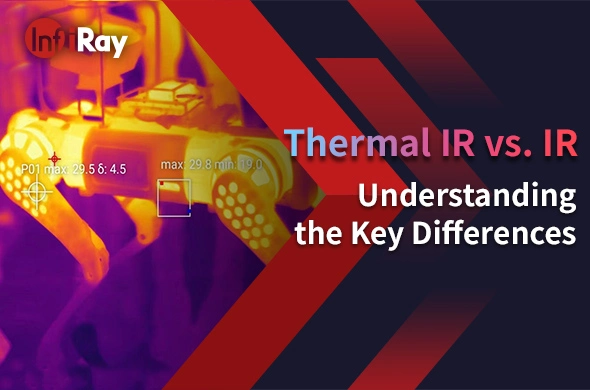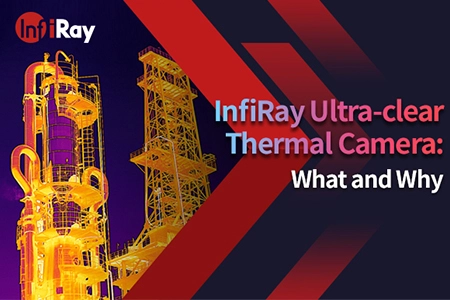Why Need A Thermal Imaging in PCB Testing

Accuracy and precision are top priorities in the complicated PCB testing field. Thermal cameras are useful in manufacturing, maintenance, and security. In this blog, we will talk about the advantages and disadvantages of a PCB with thermographic equipment, explore their applications, and assist you in choosing the right one for your specific requirements.
I. Why Should You Detect Circuit Board
PCB inspection plays a key role in all industries and ensures that electronic products run smoothly. Due to their excellent properties, thermostats can be a game-changer in improving the efficiency and reliability of the process.
II. Advantages of Thermal Imaging Cameras in Circuit Board Detection
A. Precision and Accuracy
Thermal imaging is a precise tool for measuring temperature. High thermal sensitivity allows the detection of even minor variations, thus preventing costly malfunctions.
B. Non - Non-intrusive Nature
Unlike traditional methods, which might require physical contact with the circuit board, the thermal camera operates non-invasive. This non-contact approach minimizes the risk of damage and ensures the integrity of the components being tested.
C. Detect Anomalies and Hot Spots
Thermal imaging is an excellent tool for detecting heat or unusual events that could not be detected in other ways. This capability can be invaluable in preventing overheating.

III. The Application of Thermal Imaging Cameras to Circuit Board Detection
The thermograph camera has proved to be a useful tool for PCB testing, and it has been applied extensively in various areas. Their complex characteristics make them an ideal solution for improving manufacturing procedures, optimizing maintenance programs, and reinforcing security.
A. Production and Quality Control
The application of thermal imaging to PCB inspection has revolutionized the quality control process. These can be used to track temperature variations in real-time during production, ensuring that each component meets stringent requirements for performance and reliability. By providing stable thermal data, the producer can rapidly identify and rectify all potential issues, thus greatly decreasing the quantity of defective units.
B. Maintenance and Disposal
Thermal imaging is crucial in maintaining and troubleshooting electrical systems. It is particularly useful for detecting faulty components during PCB testing. Based on the thermal image collection, the maintenance team can recognize the hot parts or unusual circumstances that may lead to the malfunction. This proactive approach minimizes downtime, makes it possible to maintain it in time, and ultimately improves electronic life.
C. Safety and Oversight
The integration of thermal cameras into security and surveillance systems is a crucial factor in protecting critical electronic equipment. Thermal imaging technology provides greater clarity and improves the identification of potential security risks. No matter if it is unauthorized access or if a fire hazard has been detected in time, the thermal camera offers extra protection to the sensitive areas that contain the key electronic components.
D. The Study of Real-Time Anomaly Detection
The key feature of PCB measurement is that it can detect anomalies and heat points in real-time. Traditional methods may overlook subtle variations, but thermal imaging can be used to detect temperature variations that may indicate potential issues. Detection of unusual incidents in real-time ensures that excessive heat and electric failure are prevented.
E. Integrating Artificial Intelligence
As Artificial Intelligence (AI) develops, thermal cameras are increasingly incorporated into AI-driven systems to enhance their capabilities. This integration enables more intelligent detection and maintenance. The AI can analyze heat from a camera, identify a pattern, and predict potential issues ahead of time, thereby enhancing PCB testing.

IV. Circuit Board Detection Key Features of Thermal Imaging Cameras
A High Resolution and Thermal Sensitivity
Select high resolution, thermal sensitivity, thermal sensitivity to high resolution, and high precision. This is particularly useful when dealing with complicated PCB components.
B. Real-time Monitoring Capabilities
Temperature monitoring in real-time is essential to detect sudden changes or abnormalities. Look for a camera that offers continuous monitoring to enhance the performance of your detector.
C. Integrating Existing Systems
Choose the thermal camera, which will be seamlessly incorporated into the existing Monitoring & Control System. This will ensure a smooth transition and improve the overall efficiency of operations.

V. Right Choice of PCB Detection Thermal Imaging Camera
A. Use Cases Considered and Specific Requirements
Figure out what you want and what you want to do with it before selecting a thermal camera. Understanding what you need, be it in terms of manufacturing, maintenance, or security, is the key to choosing wisely.
B. Popular Thermal Imaging Camera Models: A Comparative Study
Research and compare the existing hot imaging models available in the market. Get feedback from other firms in your area to gauge the performance and reliability of each model.
C. Cost Efficiency and Budget Considerations
While investing in high-quality thermal cameras is very important, consider your budget constraints. Look for an appropriate combination of functions and cost-effectiveness to ensure that you receive a positive return on your investment.

VI. Settings and Best Practices of Thermal Imaging Cameras
A. Proper Positioning of Thermal Imaging Cameras
Ensure that the thermal camera is positioned correctly to take photos of the entire PCB. Calibration is essential for accurate temperature measurement, so you must do as instructed by the manufacturer to achieve optimal performance.
B. Regular Maintenance and Repair
Regularly maintain and renew thermal cameras to ensure that they are running at their full power. This involves cleaning glasses, finding out if there is a problem with your hardware, and installing the software.
C. Training for Users and Operators
Provide comprehensive training for clients and operators, enabling them to utilize thermal cameras to the fullest extent possible. Understanding the thermal image and responding to an alert is essential for successful PCB testing.
VII. Conclusion
Thermal cameras have proven to be a good match for PCB testing, with unparalleled precision, no disturbance, and efficiency in detecting anomalies. Whether you are producing, serving, or safe, integrating thermal images into your manufacturing process can lead to increased productivity and reduced costs.











